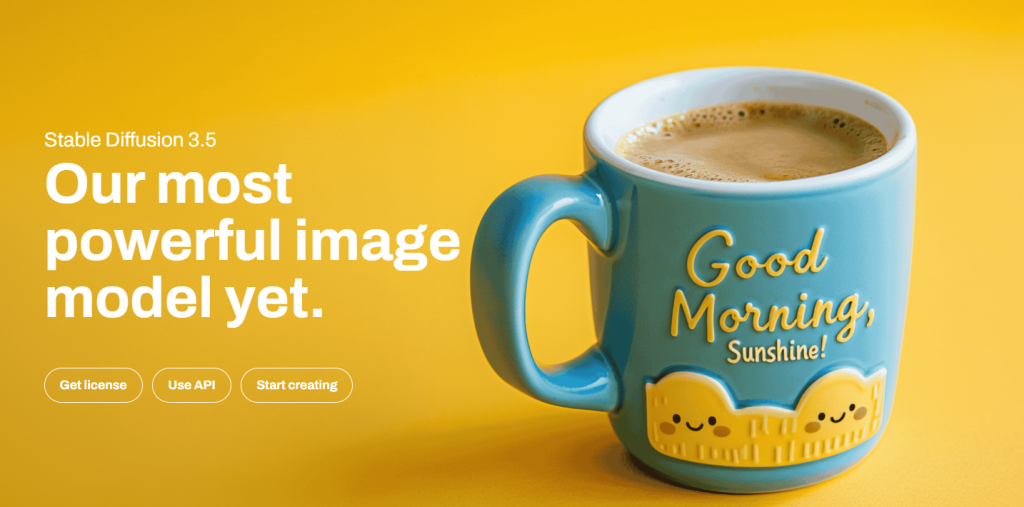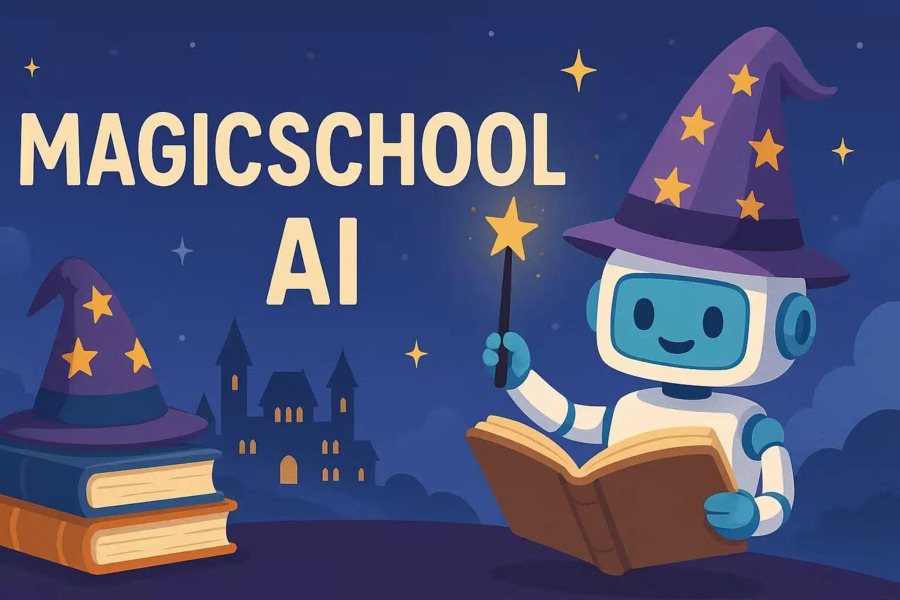You’re daydreaming about a neon-lit cyberpunk alleyway, a serene waterfall hidden in a fantasy forest, or a portrait that captures the raw emotion of a Renaissance painting. But here’s the catch—you can’t draw to save your life. Enter Stable Diffusion prompts, your magic wand for turning text into breathtaking AI-generated art.
Crafting effective Stable Diffusion prompts isn’t rocket science. With a few insider tricks, you’ll go from “What even is that?” to “Did I just create this?!” in no time.
We will introduce key elements of an effective prompts and step-by-step guide on how to write it, keep reading!
What is Stable Diffusion?
So, what exactly is Stable Diffusion? Think of it as that incredibly talented friend who can sketch out your wildest stories, except it’s an AI, and it never, ever gets tired of your requests.
At its core, it’s a text-to-image generative AI tool. That means you type in a description (your “prompt”), and it whips up a digital image based on that text.
Key Elements of Stable Diffusion Prompts
To get high-quality AI art, your prompts need structure. Think of it like giving directions to a painter: the clearer you are, the better the result. Here are the essential elements every prompt should include:
- Subject: The focal point (e.g., “a wise old wizard with a gnarled wooden staff”). Be specific—avoid vague terms like “a person.”
- Setting: The environment or backdrop (e.g., “a misty ancient forest with towering, bioluminescent trees”).
- Lighting and Mood: Sets the emotional tone (e.g., “dramatic chiaroscuro lighting” or “soft, dreamy pastel hues”).
- Art Style: Specify mediums or movements (e.g., “oil painting in the style of Van Gogh” or *“90s anime cel-shading”*).
- Details: Refine textures, colors, and composition (e.g., “hyper-detailed scales on the dragon” or “warm golden-hour sunlight”).
Skip these, and you’ll get generic, soulless outputs. Nail them, and your art will pop.
How to Write Stable Diffusion Prompts (Like a Pro)

Let’s cut to the chase: writing great prompts is iterative. Even experts tweak theirs 5–10 times. Follow this battle-tested process:
Step 1: Start Simple
Begin with a basic framework:
- Subject + Setting + Style (e.g., “a samurai standing on a rain-slicked rooftop, cyberpunk style”).
Generate a few images. If the samurai looks more like a neon teapot, move to Step 2.
Step 2: Layer in Details
Add precision like a sculptor refining clay:
- Bad: “a dragon” → Good: “a massive obsidian-scaled dragon, wings outstretched, glowing embers trailing from its jaws”.
- Bad: “a house” → Good: “a crumbling Victorian mansion, overgrown with ivy, under a stormy purple sky”.
Step 3: Use Negative Prompts
Ban unwanted elements with negative prompts:
- “no extra fingers, no blurry faces, no text”.
- “low-res, deformed, cartoonish” (if aiming for realism).
Step 4: Avoid Common Pitfalls
- Keyword salad: “dragon, epic, fire, wings, scary, cool” → Too chaotic.
- Conflicting terms: “brightly lit midnight scene” → The AI will short-circuit.
- Vagueness: “a beautiful landscape” → Could yield anything from a desert to a black hole.
4 Types of Stable Diffusion Prompts
Depending on what you’re trying to achieve, you’ll use different types of prompts. Let’s break them down with plenty of examples.
1. Style Prompts
Style prompts are all about capturing a particular “vibe” or aesthetic. They tell Stable Diffusion what artistic look to aim for, whether it’s a classic painting technique or a modern visual trend. The ultimate goal? To make your generated image instantly recognizable as belonging to that specific style.
Examples of styles you can use:
- Art movements: Impressionism, Surrealism, Cubism, Pop Art, Renaissance, Art Deco
- Visual themes: Fantasy, Cyberpunk, Steampunk, Retro 80s, Minimalist, Sci-Fi, Gothic
- Artistic mediums: Oil painting, Watercolor, Digital art, Pencil sketch, Graffiti, Photorealistic
Prompts Examples:
- “A serene forest at dawn, rendered in an impressionist style, with soft, visible brushstrokes, vibrant greens and delicate pinks, in the style of Monet.”
- “A bustling cyberpunk street market, illuminated by countless neon signs, teeming with diverse vendors, rendered as digital art with sharp, defined lines, capturing the gritty atmosphere of dark alleys and rain-soaked pavement.”
2. Negative Prompts
Negative prompts are essentially your “do not want” list. They are incredibly useful for eliminating those pesky little annoyances—like distorted extra limbs, blurry details, or random objects that simply don’t belong in your perfect scene.
Common negative keywords to use:
- Unwanted elements: “no text, no watermarks, no extra limbs, no blurry, distorted, ugly, poorly drawn, disfigured, mutated, bad anatomy”
- Style no-nos: “not cartoonish, not low-res, not abstract, uncolored, grayscale, sketch”
- Setting issues: “no buildings, no cars, no people, crowded, busy, noisy”
Prompts Examples:
- Prompt: “A quiet, pristine lake at sunset, with majestic mountains in the background.”
- Negative prompt: “no boats, no birds, no clouds, no ripple, crowded, busy”
- Result: A perfectly clean, peaceful lake scene featuring only the mountains and the vibrant sunset.
Related Reading: Midjourney Negative Prompt
3. Medium Prompts
Medium prompts are all about specifying how the image should appear to have been created. Think of it as choosing your canvas and your tools—are we talking about thick oil paints, crisp digital pixels, or soft charcoal? This choice fundamentally alters the texture, color depth, and overall “feel” of your generated image.
Examples of mediums to specify:
- Traditional: Oil on canvas, Watercolor on paper, Charcoal sketch, Acrylic painting, Ink wash, Pastel drawing, Gouache
- Digital: 3D rendering, Vector art, Pixel art, Digital painting, Glitch art, Concept art, Matte painting
- Unconventional: Spray paint, Mosaic, Stained glass, Collage, Embroidery, Woodcut print
Prompts Examples:
- “A majestic lion resting regally on a sun-drenched rock, rendered as an oil on canvas painting, featuring thick, visible brushstrokes, rich gold and warm brown tones, and dramatic, chiaroscuro lighting.”
- “A sprawling city skyline, depicted in pixel art, with an 8-bit style, using bright blues and grays, simplified shapes, evoking a nostalgic retro video game vibe.”
4. Lighting Prompts
Lighting can quite literally make or break an image. It’s not just about “bright” or “dark”—it’s about the specific type of light, how it interacts with the subject, and the intricate shadows it casts. Lighting prompts have the power to transform a “meh” image into an absolute “wow” image by adding profound depth, drama, and emotion.
Examples of lighting to use:
- Time of day: Golden hour (the magical hour after sunrise or before sunset), Blue hour (the enchanting periods of dawn or dusk), Midday sun (harsh and direct), Moonlight, Twilight
- Light sources: Candlelight, Neon signs, Streetlights, Firelight, Studio lights, Spotlight, Lantern light
- Effects: Soft shadows, Harsh shadows, Backlighting (where the subject is lit from behind, creating a halo effect), Rim lighting (light that outlines the edges of the subject), Volumetric lighting (light rays visible through mist/fog), God rays
Prompts Examples:
- “A charming cabin nestled deep in the woods, bathed in the warm glow of golden hour light, sunlight filtering enchantingly through the surrounding trees, casting long, peaceful shadows on the grass, with warm orange and yellow tones dominating the scene.”
- “A desolate beach at night, with the cool, ethereal moonlight reflecting on the water, casting serene blue tones, powerful waves crashing rhythmically, and the stark silhouette of a lone surfer.”
Conclusion: Your AI Art Journey Starts Now
Stable Diffusion won’t read your mind. But with well-crafted prompts, it’ll come damn close. Start small, iterate often, and don’t fear the “toaster with wings” phase—every AI artist has been there.
Now, go prompt like a pro. That dreamlike fantasy scene or sleek sci-fi concept art is just a few keystrokes away.
You Might Also Like: How to Write Chatgpt Prompts?



